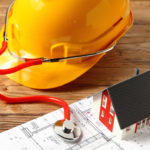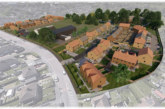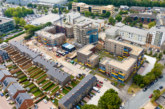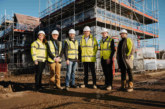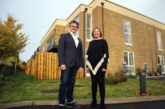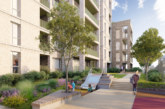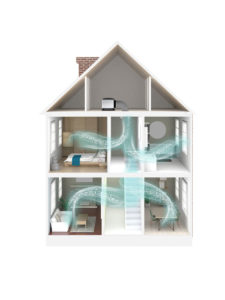 Dan Bourke, Social Housing Regional Manager at EnviroVent, looks at the recent findings of the All-Party Parliamentary Group (APPG) for Healthy Homes, which focused on the impact on our nation’s health and economy as a result of people living and working in unhealthy buildings.
Dan Bourke, Social Housing Regional Manager at EnviroVent, looks at the recent findings of the All-Party Parliamentary Group (APPG) for Healthy Homes, which focused on the impact on our nation’s health and economy as a result of people living and working in unhealthy buildings.
The ‘Breaking the Mould’ study that was carried out by campaigning consultancy Sustainable Homes amongst four local authorities from Spring 2017 to Spring 2018 revealed some interesting findings relating to condensation and mould growth. It found that respiratory conditions, such as asthma, were more prevalent in homes with a greater incidence of mould.
There were a number of factors identified that contribute to the increased risk of mould growth, including a home’s size, its usage — including occupancy levels, levels of insulation, age of construction, plus glazing levels and heating fuels. Many of these factors were found to be outside the influence of tenants, which therefore challenged the view that mould comes about as a result of activities that residents carry out in their home that create excessive moisture.
White paper
The APPG for Healthy Homes was set up, which recently produced a white paper — Building Our Future: Laying the Foundations for Healthy Homes & Buildings that sets out to drive up standards and help reduce health problems caused by people living and working in unhealthy buildings. It highlights the need to build better quality homes and buildings as well as to upgrade existing housing stock.
The report identifies homes which exacerbate health conditions as costly to the economy, and that there is a need to reduce the health burden on the NHS. It recommends a joined-up approach with a cross-departmental committee for health and buildings to champion change.
The white paper recommends the need for funding to support independent research on the renovation of homes that are detrimental to health and well-being of vulnerable people and those in poverty. It also recommends that the competency of installers needs to be improved, such that they are required to be members of a registered competent person scheme. The report suggests this will ensure installers have the right skills and knowledge to take a more holistic approach to renovation for improving health and well-being.
The report also recommends that the Government commits to the construction of larger numbers of healthy new homes, including quality social and affordable housing, which would help to alleviate issues of overcrowding and poor physical and mental health. In Building Our Future: Laying the Foundations for Healthy Homes & Buildings, overcrowding is cited as one of the major factors for condensation and mould conditions in social housing. Reducing the density of population in social housing would, in turn, help to reduce issues with poor indoor air quality.
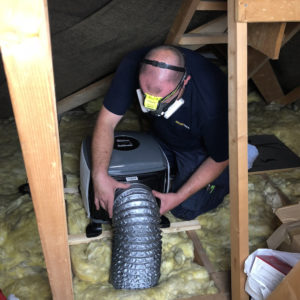 Housing priority
Housing priority
The APPG believes that better, healthier housing should become a national priority and that improvements made in homes go a long way to improving the health of the nation. The document defines healthy buildings as not simply those where there is a lack of ill health, but as buildings that maximise the occupants’ physical, mental and social wellbeing.
The study highlights the very real human cost of cold homes. The report refers to the number of lives lost in the winter of 2014/2015 with an estimated 43,900 excess winter deaths — cold housing was estimated to cause a fifth of these deaths.
In addition, children living in cold homes have been found to be twice as likely to suffer a respiratory problem than those living in warm homes. Cold homes are also associated with an increased incidence of worsening existing respiratory conditions, such as asthma.
Positive input technology
In a 2016 survey of 3,000 UK homeowners and renters, 90% said they wanted a home that did not compromise their health and well being and 30% said they would be willing to pay for a healthy home. Technological advances in ventilation and use of smart apps make it easy to access information about a home’s performance. It also means internal conditions can be monitored and information on poor building quality can be accessed and acted upon more easily. The APPG recommendations clearly state that there needs to be a drive towards making the public better informed about the built environment and its impact on health.
These findings demonstrate that simply upgrading a home with new heating systems, better insulation and more energy-efficient windows and doors is not, in isolation, the answer. By taking a holistic approach to healthy homes, there is a need to carefully balance heating, energy efficiency and good ventilation — three essential elements. If one of these is missing, it could potentially cause an environment that exacerbates ill health in occupants.
Whole house ventilation systems, like Positive Input Ventilation (PIV), can help tackle air quality issues in existing homes. A PIV system works by delivering clean, fresh, filtered air into the home from a central position. Systems such as ATMOS from EnviroVent gently ventilate a property and dilute high levels of humidity so that condensation and mould cannot form. This also reduces the level of harmful household contaminants, thus improving indoor air quality and creating a healthy all-year-round living environment.
Some social landlords have already taken a lead on this and are integrating mechanical ventilation systems when they plan energy-efficient upgrades to properties. This demonstrates a proactive and responsible approach to ventilation across their housing stock, for the benefit of the health and well being of occupants.

